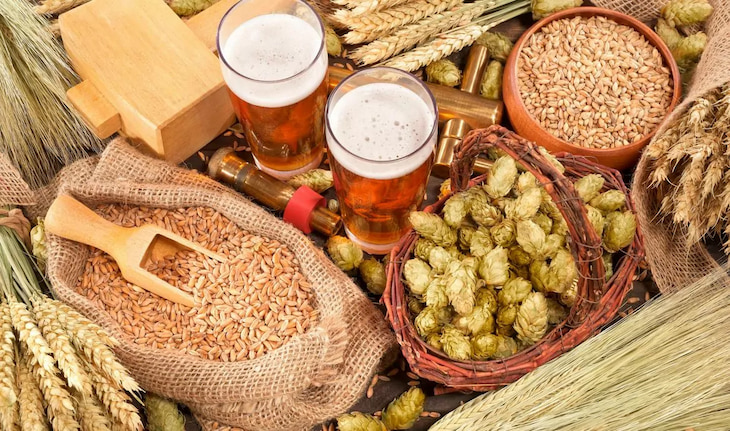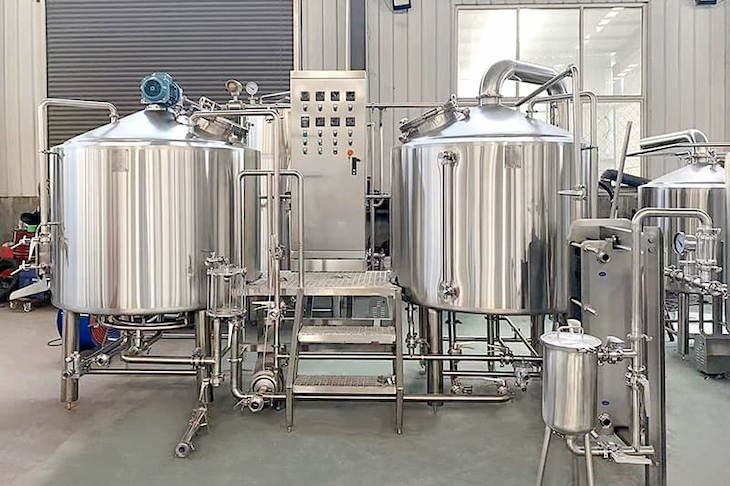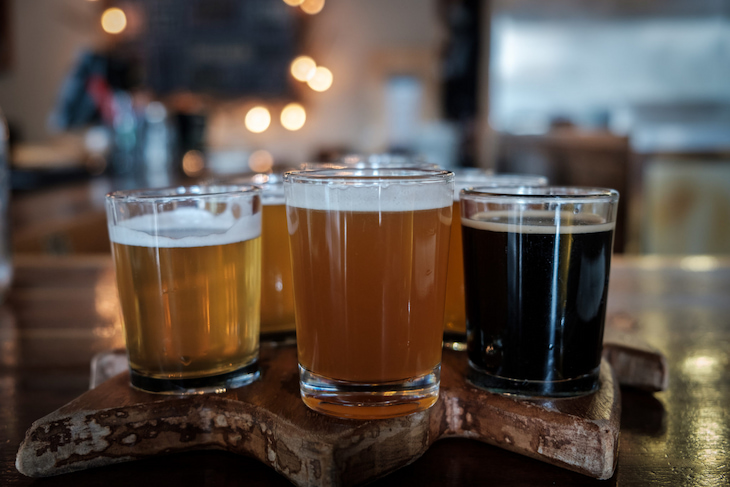You’ve heard it before: German beers are superior, more potent, and, well, unique. American brews, on the other hand, often fall flat and feel underwhelming to a longtime connoisseur. These claims aren’t entirely untrue either: the USA produces plenty of well-known, subpar beers, like Budweiser, Miller, and Coors.
Yet the market is shifting: Since the late 1980s, there have been an increasing number of wonderful, small American breweries. And the US craft brewing scene has taken off in recent years, ushering in a new age for American beer.
Although though craft brewers only account for about 5% of the industry, they are quite influential. In response to the craft trend, larger companies are also producing better and better brews. For example, Coors makes Blue Moon, a wheat brew, and Anheuser-Busch released Stone Mill, an organic pale ale.
On the other hand, American consumers may find the German beer market to be too much in comparison. What’s more, the American and German brewing methods are quite different, resulting in brews with widely different tastes. Now, let’s see how both countries compare when it comes to this popular drink.
Ingredients

When it comes to ingredients, both American and German breweries use the traditional trifecta of hops, malts, and yeast. However, there are some differences in the specific varieties of ingredients used.
In the United States, brewers tend to use hops with higher alpha acid content to create a stronger, more bitter flavour profile. This is particularly evident in the popular IPA (India Pale Ale) style, which has become synonymous with American craft brews.
American brewers also use a variety of malts, including caramel and roasted malts, to create deeper, more complex tastes. The yeast used in the most popular USA beer styles is often selected for its ability to ferment at higher temperatures, allowing for quicker turnaround times in the brewing process.
German brewers, on the other hand, tend to use more traditional ingredients. They typically use hops with a lower alpha acid content, resulting in a less bitter, more balanced flavour profile. The malts used in German brewing are typically lighter in colour, resulting in a lighter hue and taste.
German brewers also use a unique strain of yeast, which results in a distinct taste and aroma.
The Brewing Process

In the United States, the brewing process tends to be more focused on efficiency, with a focus on quickly producing large quantities of the drink. American brewers use a variety of modern equipment, including automated brewing systems, to create a consistent product.
In contrast, German brewers tend to take a more traditional approach to brewing, with a focus on quality and craftsmanship. The German brewing process involves a multi-step mashing process, where the grain is heated at specific temperatures to convert starches into sugars. This process creates a more complex flavour profile.
German brewers also tend to use open fermentation, which allows for more natural carbonation and flavour development.
Beer Styles

Perhaps the most obvious difference between American and German beer is the styles that are most popular in each country. In the United States, craft beer has exploded in popularity in recent years, resulting in a wide range of styles being produced. Some of the most popular USA beer styles include IPAs, stouts, and pale ales.
In Germany, beer has a much more traditional flavour profile, with a focus on a few specific styles. The most popular German styles include Pilsner, Dunkel, and Hefeweizen. These brews tend to have a lighter flavour profile, focusing on balance and drinkability.
Taste Profile
USA beer tends to be more bitter and hoppy, with a focus on creating complex and unique flavour profiles. This is particularly evident in the popular IPA style, which is known for its strong, bitter flavour.
German beer, on the other hand, tends to have a more balanced and lighter flavour profile. German brewers focus on creating brews that are easy to drink and that pair well with food. The Pilsner style, for example, is known for its light, crisp taste, while the Dunkel style has a rich, malty flavour.
Alcohol Content
The alcohol content is another area where American and German brews differ. American beer tends to have a higher alcohol content, with many craft brews having an ABV (alcohol by volume) of 6 % or higher. This is particularly evident in the popular imperial stout and double IPA styles. These beers are known for their high alcohol content and bold, complex flavours.
German beer, on the other hand, tends to have a lower alcohol content, with most falling between 4% and 5% ABV. This is because German beer is often enjoyed as a session beer, meaning that it can be consumed over a longer period without resulting in intoxication.
So, Who Wins?
The battle of the brews between America and Germany is a tough one to call. Both countries have their unique brewing styles and flavour profiles, and both have a rich history of brewing. At the end of the day, it all comes down to personal preference. Whether you prefer the bold and complex flavours of American craft beer or the balanced and drinkable German brews, one thing is for sure: there’s no shortage of great beer to choose from.



















